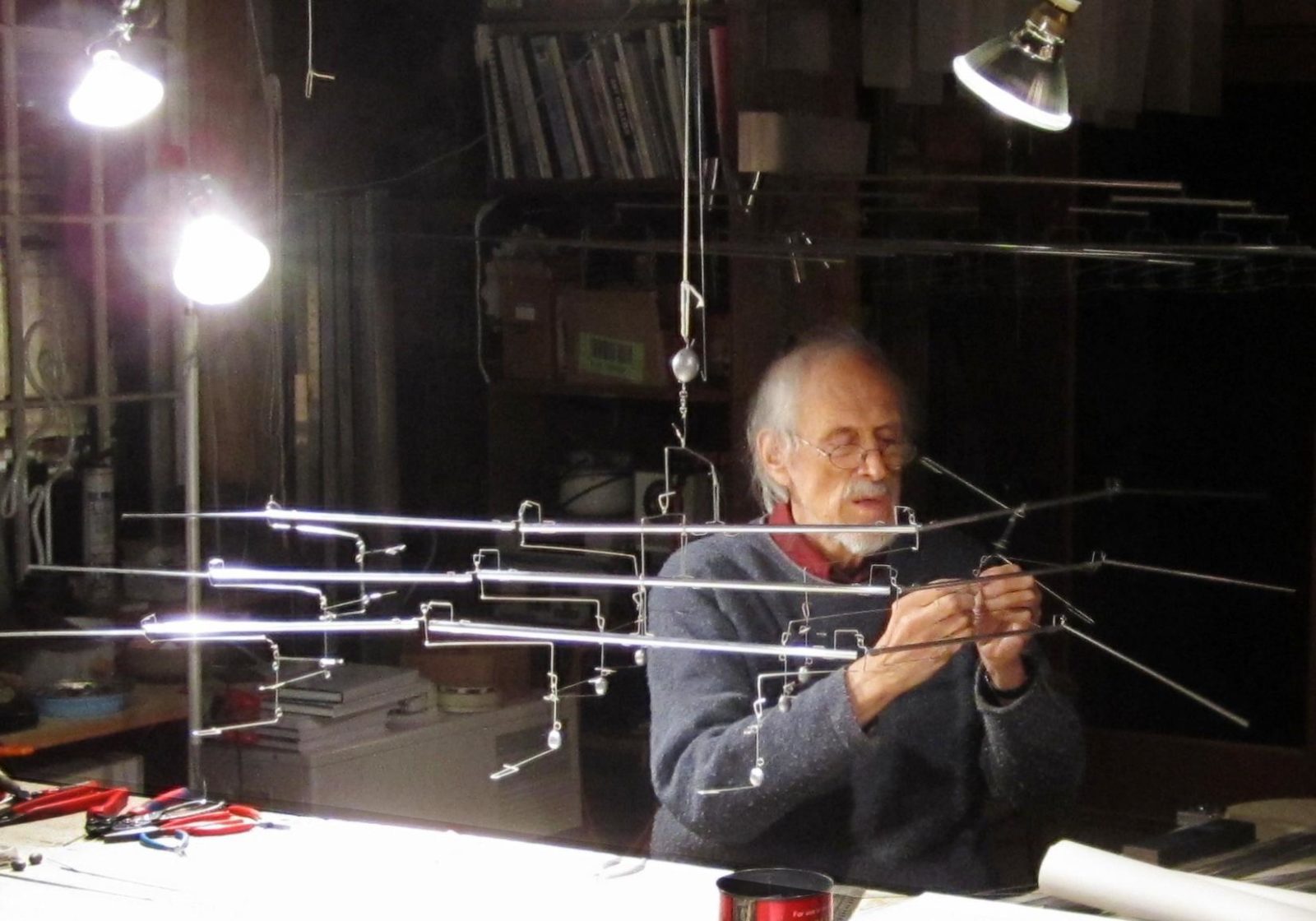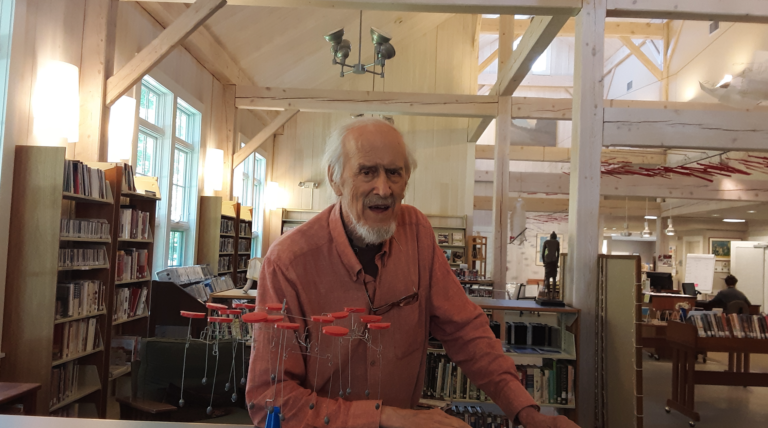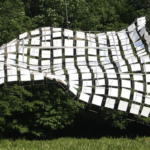Defying Gravity
by: A'Dora Phillips & Brian Schumacher
January 30, 2021

“What I think we're doing makes sense when we find the patterns that evolve. We don't set out to make them. We make the machine and keep our artistic instincts out of it and the air comes along and does the art—and that's where the unpredictable and the sensuous enter.”
Download Interview PDF
Our oral history with Tim Prentice was conducted on July 11, 2020. Due to COVID-19, we met with him outdoors. At times, wind blowing across the microphone caused interference, making some passages impossible to hear and transcribe. Although we lament missing any of Prentice’s words, it’s impossible not to feel a kind of poetic appropriateness at play here, in the conversation with an artist for whom the wind has been a constant companion.
Among other things, Tim Prentice talks about:
- Why he waited until after he’d become a successful architect to become a sculptor
- His experience teaching architecture at Columbia University when he was transitioning to becoming a sculptor
- The relationship between architecture and sculpture
- His time studying architecture at Yale and some of his artistic influences (Alexander Calder, George Rickey, Josef Albers, the Russian Constructivists)
- The materials and tools he uses to make his sculptures, including relatively new materials such as lexan
- Some of the notable public art commissions his studio has taken on, including the Knight Cancer Research Building at Oregon Health and Science University (Portland, Oregon); the Sandy Hook Elementary School (Newtown, Connecticut); the Phaeno Science Center (Wolfsburg, Germany); and Union Depot (St. Paul, Minnesota)
- His service as a bombardier navigator during the Korean War
- What it’s like to work with the wind as an element of his art
- The work of kinetic sculptor Theo Jansen
- His favorite art story, related by Philip Guston, about trying to vanquish the many influences that can distract you from your purpose (thereby finding the space to be alone in your studio)
- How touch has helped to compensate for partial vision loss when he’s working in his studio, which has made him aware of the many things we do every day without needing to look (like tying a shoe)
- Excerpts from this oral history can be found here.
Further Reading

Tim Prentice
Kinetic Sculptor Says “Wind Is the Ultimate Artist”
An interview with kinetic sculptor Tim Prentice on the occasion of a recent exhibit at the Cornwall Library in Connecticut.
Read More

Leave a Comment